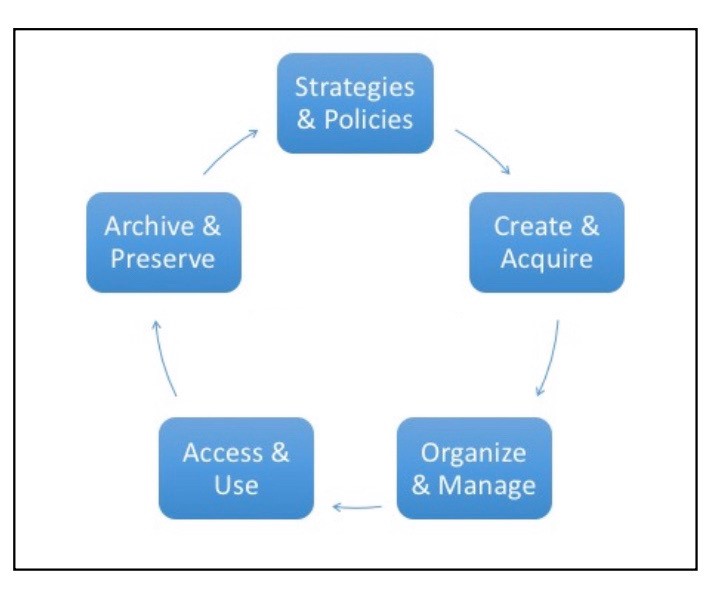Helen Hockx-Yu is Enterprise Data Architect at the University of Notre Dame in the USA
The University of Notre Dame (UND) is a private research university located in the United States. I joined UND in 2016 as a programme manager for digital asset management. Since 2009, various initiatives have taken place to address the challenge but they have largely been specific in their scope and not broadly adopted across the University as a whole. I was expected to build on the previous work, to refocus and come up with a new plan. My web archiving and digital preservation background were thought to be relevant and helpful - the executives who entrusted me with this important work were the University Librarian and the then Chief Information Officer.
My first challenge was to understand the definition and scope of digital asset management, as the term often relates to rich media such as digital videos, animation, graphics, photographs, audio files, logos and marketing collateral. Digital Asset Management (DAM) systems emerged in the 1990s in the private sector to support digital media creation, marketing, publishing and brand management, and their customer-base mainly consists of commercial organisations.
It quickly became apparent that digital Asset Management has a much broader scope in the UND context. It refers to the set of policies, processes and systems used for the management of all digital data and information regardless of the format. The word “asset” also implies an underlying process of making value judgements. Digital assets can be defined as records, data and resources, typically owned by the University, regarded as having (usable or historical) value and therefore needing to be maintained for a period of time and/or preserved in perpetuity. Three broad, not necessarily mutually exclusive categories have been identified to conceptualise the digital asset landscape at UND:
- University Records
University Records are “recorded information created or received in the course of conducting University business and kept as evidence of such activity. This definition extends to records in all formats, including but not limited to e-mail, electronic and paper documents, film and print graphics, and audio and video recordings.”
- Research Data
Research Data is “information recorded or customarily recorded in the relevant field, as a result of research. Data include notes, records, slides, photographs, drawings, information stored in electronic and/or computer readable form, reports, publications, correspondence, and summaries, compilations, or derivatives of other data.”
- Resources for teaching, learning and research
This category of digital assets refers to the wide range of content the University collects, creates, receives as donation, or purchases to support learning, teaching and research. Examples include the Library collections, donated datasets, electronic databases, electronic journals, also lecture captures and online learning content.
Following the initial campus wide consultation and scoping, a Digital Asset Management programme definition including a proposed programme of work and headcounts was defined and submitted to the University’s annual budget working group. The quest was, however, only partially funded with fixed term staffing, making it hard to sustain the effort required to implement the programme. The renewed effort to address Digital Asset Management between 2016-2018 nevertheless delivered a number of positive outcomes:
- Risks related to digital asset management were brought to the attention of the Institutional Risk & Compliance Committee (IRCC). These are being monitored at institutional level and addressed strategically.
- A team of executives across the University was assembled and developed a set of high-level strategies and guiding principles.
- An enterprise solution for digital video (and media) management has been put in place.
- The University Archives have procured a digital preservation system.
- The University Library has hired a dedicated digital preservation strategist and is expected to start a focused digital preservation programme.
Under the leadership of our new CIO John Gohsman, who joined Notre Dame in 2018, we have taken a more focused approach to digital asset management, broadly consisting of three components outlined below.
- Clarification of roles and responsibilities
We examined ownership, policy, governance and whether there are designated custodians for each category of digital asset, and engaged with high level University executives to discuss and clarify roles and responsibilities. This exercise revealed gaps, as well as overlapping efforts. We can prioritise and address these consequently.
- Contextualisation of Digital Asset Management
One reason for the lack of campus-wide awareness and buy-in is that Digital Asset Management is poorly defined. We do not collectively understand or agree on what it entails. It is in addition often seen as technology-driven when it is really business- and people-driven. Contextualising and defining what Digital Asset Management means is a good way to communicate with stakeholders and make people understand their roles in it. We have identified the following key components or goals:
- Management: ingest, store, organise, describe, locate and control assets
- Accessibility: easily search, find, cross-reference and analyse digital assets
- Retention/archiving: know what and how long to retain assets
- Preservation: the security of knowing institutional heritage will be available for generations to come
- Shared expertise and streamlined workflow: the aggregation of human talent and technical infrastructure to benefit the entire institution
- Using asset lifecycle model to guide collaboration
Lifecycle Model is a commonly accepted framework for managing and curating digital information. There are different ways to define the stages of digital assets, dependent on institutional practices and the level of detail. The model outlined below is a generic and broad one, omitting much detail yet applicable to all categories of digital assets created and acquired by the University.

As with many higher education institutions, while there is a central process of allocating funds at UND, devolved managerial responsibilities and budgeting are essential elements of the management model. Authority and accountability are with business units, including the autonomy of spending budgets. The biggest challenge in digital asset management is organisational, how the University as an organisation in its entirety ensures consistency or achieves economies of scale, being aware that devolution tends to encourage duplication or create silos. Managing digital assets is not the responsibility of any single organisational unit. It takes the entire “village” working together to address the challenge.
The lifecycle approach ensures that policies and strategies are consistent and key stages of the lifecycle are not overlooked. It can be used to identify how an asset moves from one stage to another, who are involved and responsible for each stage. It can also reveal duplication of effort, where change of custodianship takes place and how the handover should be managed - this is the piece that unites the village.
The more focused approach to digital asset management also led to a change of my role. I now work in the Enterprise Architecture team as the Enterprise Data Architect. While the ownership of digital assets lies with other University constituencies, the role of IT is a collaborator and an enabler: our mission is to help campus constituents achieve their goals, by delivering technology solutions and expertise. Approaching digital asset management from data architecture perspective catalyses solutions based on business requirements. This allows us to create principles, standards and models that are aligned with policies and business processes, and implement these in IT-managed infrastructure, applications and services to support digital asset management.
